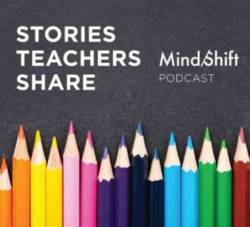When Tammi joined the working group on academic dishonesty at Fieldston, she and the other faculty and student volunteers in the group explored similar ambiguities. “Cheating connotes the idea that something is planned, but sometimes students slip up, or they’re confused,” she said. Rules about paraphrasing and footnoting can be perplexing, for example. And what happens at home with homework, especially when tutors and even parents participate in completing it, adds further complexity. The group studied the problem for a year, assessing cheating rates at their school and considering other schools’ policies, before arriving at their solution: Fieldston would adopt a restorative justice model to handle incidents of academic dishonesty, and a new student and faculty board would oversee its execution.
The working group wanted students to understand that cheating is an injury to them and to their community. “Cutting corners”—borrowing from a neighbor’s exam, passing off paragraphs from Shmoop and Sparknotes as original work—not only deprives students of learning; it also wounds the entire school body by raising teachers’ expectations of what kids understand. “Academic dishonesty doesn’t hurt teachers,” Tammi said. “It hurts students and the community,” she said.
Fieldston launched its Academic Integrity Board in the fall of 2015. Consisting of eight students and four adults—two elected kids from each grade, an assistant principal, learning specialist, faculty representative, and a student dean—the board’s first duty is to educate rather than punish. When an incident occurs, the body meets to hear about the case in depth. “They’re looking for intent and knowledge,” Tammi said. “They want to be thoughtful about how they respond,” she added. Depending on the offense, a student might be asked to complete an educational assignment—on the correct way to paraphrase, for example—or he might receive a zero or the board might consider other alternatives.* The names of the students who come before the board remain anonymous, but the board shares its findings with the school community, so that all students are reminded of what constitutes academic dishonesty, and what the repercussions might be.
When introducing the new board at the start of the school year, the school also held an assembly for all students to talk about academic integrity. A part of that presentation involved viewing clips from a recently completed documentary on the subject, (Dis)Honesty: The Truth about Lies, and a discussion with filmmaker Yael Melamede. Grounded in Ariely’s research, the film is a complement to Fieldston’s restorative justice model and was screened in its entirety with the Fieldston community in November. Social science findings on cheating form the backbone of the film, while personal interviews with individuals who have been caught up in lies illuminate how easy it can be to slip into dishonesty. The film educates viewers about scenarios that invite cheating and those that thwart it—something Ariely believes is part of the solution. “We put an emphasis on punishment rather than education, which is a mistake, and we don’t understand conflicts of interest,” Ariely told me. “If we understood all of those we could not eliminate dishonesty, but we could reduce it substantially,” he added. Learning about the conditions in which we’re apt to deceive ourselves and others, in other words, may be the best defense against dishonesty.
Ariely’s social science research involving thousands of individuals revealed that while few cheat a lot—20 of the 40,000 involved in the experiments—many more—about 28,000—cheated a little bit. Most everyone has what he calls a “personal fudge factor” that allows for just a little dishonesty, provided that the conditions are right. For example, if people see others cheating without consequence, they’re more apt to do the same; social norms permit it. If cheating seems to benefit a “good cause,” even more feel comfortable deceiving. The more distant the reward from actual money, the more likely people will cheat. On the other hand, moral reminders shrink the amount of cheating: Study subjects who were asked to recall the Ten Commandments before participating in the “test” cheated less—regardless of their memory of the commandments or religious orientation. And social norms cut both ways. If the school environment promotes honesty, and students see someone from a rival school engage in a con, they will cheat even less.
The upshot for schools is clear: honor codes work, Ariely said, provided that students write them out and talk about them. Codes signed at the start of the year and tucked away in an administrator’s office will flop, however; the same holds true for one-off lectures on moral behavior. To reduce cheating, the honor codes need to be woven into the school’s culture, a recurrent nudge that honesty matters.
Now closing in on the end of the school year, Tammi is hopeful that students at Fieldston will grow to see the new academic integrity board as educational rather than disciplinary, and will come to welcome the restorative justice philosophy that serves as its foundation. “Being academically honest helps them,” Tammi said. To say nothing of the rest of us. “Every time we cheat, we break a little bit of trust in society,” Ariely said.
*An earlier version of this post mistakenly reported that students are expelled after three offenses. We regret this error.

Don't miss an episode of Stories Teachers Share.



